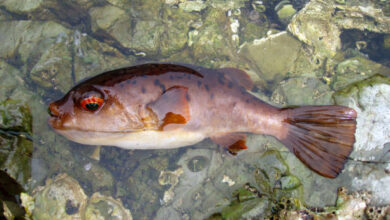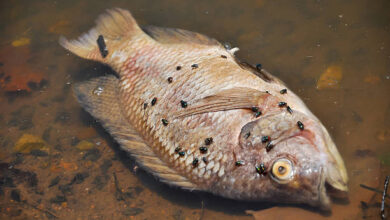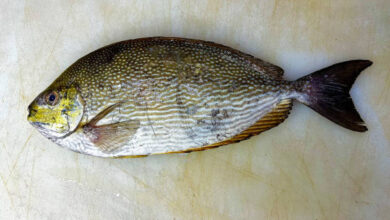Can you mix sand and gravel in a fish tank
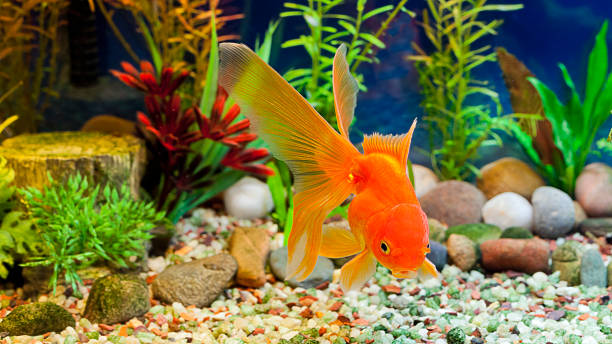
The choice of substrate for a fish tank is often an afterthought for many aquarium enthusiasts, but it’s one element that can greatly affect the health and happiness of your aquatic pets. One of the questions we often encounter is whether or not you can mix sand and gravel in a fish tank. Read on to learn more.
The Role of Substrate in a Fish Tank
When it comes to fish tanks, substrate isn’t just about making your tank look good. Its role is far more critical and multifaceted than you might think. Acting as a growth base for beneficial bacteria, the substrate is essentially a bustling microbial city aiding in the breakdown of waste and toxic chemicals. This microscopic ecosystem helps maintain a stable pH level, creating a healthy environment for your aquatic friends.
Substrate also serves as a comforting ground for bottom dwellers who love to forage or hide in it. Have live plants in your tank? Well, the substrate is their root support system and aids in keeping those decorative pieces in place. In short, the substrate isn’t just fish tank filler; it’s an essential part of a thriving aquatic environment.
This holds especially true for gravel fish that specifically thrive in a substrate-filled setting.
The gravel provides an ideal environment for these species, further underscoring the crucial role of the substrate in the ecosystem of your tank. In fact, many gravel fish, such as Corydoras and loaches, demonstrate a noticeable difference in behavior and overall health when placed in tanks with well-maintained substrates.
This highlights the importance of investing in the right substrate, to ensure the comfort and wellbeing of these and other species in your aquarium. Considering the specific needs of gravel fish, you may need to choose the type of substrate wisely, based on their natural habitat. Substrate diversity also encourages the display of natural behaviours and better health for all fish species.
For instance, gravel fish like the Corydoras catfish or loaches prefer a sandy or small pebbled substrate to replicate their natural river bed habitats. Incorporating this in your aquarium setup will stimulate their usual scavenging activity and enhance their overall wellbeing.
Pros and Cons of Using Gravel in a Fish Tank
Gravel, with its vibrant hues and varying sizes, is often the go-to choice for many aquarium aficionados. Its advantages are certainly appealing. Cleaning your tank is a breeze with gravel as it doesn’t compact or clump together.
Plus, it’s porous enough to allow water to flow freely, averting the buildup of harmful bacteria. Another tick in the pro column for gravel is its stability – perfect for anchoring your plants and decorations.
However, as with all things in life, there are drawbacks to using gravel. Some fish species love to burrow and rummage through the substrate. For these finned friends, gravel might not be the best option, as its larger pieces can obstruct their natural behavior. Smaller fish could also face the risk of getting trapped in the spaces between the stones.
It’s all about knowing your aquatic companions and catering to their needs and preferences. It’s a case of striking the balance between the practical benefits of gravel and the behavioral patterns of your fish.
Advantages and Disadvantages of Sand as a Substrate
When it comes to fish tanks, sand provides an inviting, natural playground for many fish types, allowing them to burrow and dig freely. Its smooth texture is a huge bonus as it significantly lowers the risk of your aquatic buddies injuring themselves. However, no substrate is perfect, and sand has its fair share of drawbacks.
Its compact nature over time can create lifeless pockets where harmful bacteria can multiply unchecked. This could compromise the health of your tank’s inhabitants. It’s also important to note that cleaning a sandy aquarium might require a bit more effort compared to its gravel-filled counterpart.
Sand’s propensity to be sucked up during vacuuming is an aspect you’d need to work around. The decision of whether to use sand should hinge on the behavioral patterns and needs of your fish, along with your readiness to provide extra TLC during cleaning times.
The Practicality of Mixing Sand and Gravel in a Fish Tank
Melding sand and gravel in your aquarium can certainly create an enticing environment for your finned friends. It’s like combining the best of both worlds, offering a wide range of grain sizes for diverse fish species, and creating a buffer against the development of harmful bacteria. However, while this mixture can create an aquatic paradise, it can also invite a few challenges, particularly when it comes to cleaning and maintaining the tank.
One common concern is that over time, your carefully mixed substrate might segregate, with the sand settling at the bottom and the gravel floating to the top. This could make your cleaning routine a bit more complicated and possibly disrupt the visual appeal you initially aimed for. It’s like attempting to mix oil and water; without proper intervention, they naturally tend to separate.
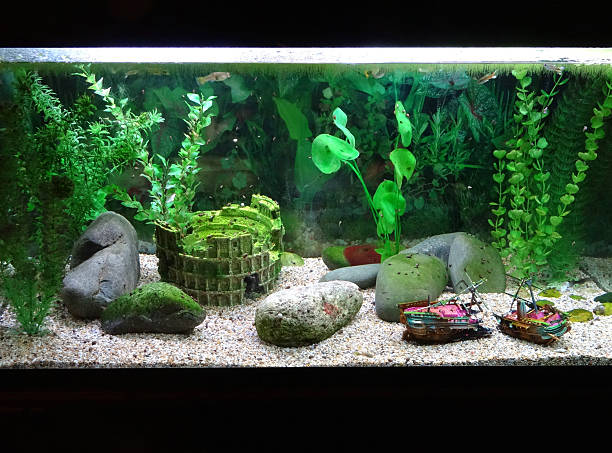
Yet, despite these potential hurdles, combining sand and gravel isn’t a bad idea. It’s a matter of knowing how to strike the right balance and being ready to handle the extra care your mixed-substrate aquarium might demand. Remember, your goal is to create a happy, healthy, and visually appealing environment for your aquatic pals, and sometimes, that might involve mixing things up a bit – in this case, quite literally!
How to Successfully Mix Sand and Gravel
When it comes to fusing sand and gravel in your aquarium, a careful and considered approach is vital. Two popular methods to consider are layering and zoning. Layering involves placing a foundational layer of sand, topped by a layer of gravel. The sand provides a soft base for burrowing creatures, while the gravel aids in the growth of beneficial bacteria.
On the other hand, zoning means dedicating specific sections of your tank to either sand or gravel. This is especially beneficial for tanks housing a diverse range of fish, catering to different substrate preferences. However, this approach requires a physical divider or boundary to keep the sand and gravel from mingling.
Whether you opt for layering or zoning, your method should depend on your fish’s behavioral patterns and your aesthetic preference. It’s important to note, though, that mixing substrates will demand extra diligence during cleaning and maintenance to maintain your envisioned substrate arrangement.
Remember, it’s not just about merging two types of substrate. It’s about creating a comfortable, engaging, and visually striking environment for your aquatic friends. If done thoughtfully, mixing sand and gravel could turn your fish tank into a captivating aquatic haven.
What to Consider Before Mixing Sand and Gravel
The decision to blend sand and gravel in your fish tank is a big one, and it should be treated with the consideration it deserves. Before you dive into this endeavor, take a moment to assess the needs of your fish. Are they fond of burrowing? Could they unintentionally ingest the substrate? Is frequent cleaning of the tank a task you’re prepared for?
In addition to these practical factors, the visual appeal of your tank also plays a role in this decision. Mixing substrates can create a unique and dynamic visual effect that can make your aquarium stand out. However, this is highly subjective, and what looks pleasing to one person might not resonate with another.
Also, contemplate on the time you’re willing to dedicate to upkeep. The combination of sand and gravel may necessitate a more meticulous cleaning routine, requiring additional time and effort.
Your ultimate goal is to create a stimulating, safe, and attractive habitat for your aquatic companions. In light of this, consider whether mixing sand and gravel will serve this purpose or if a single substrate might better suit your needs and capabilities. As always, the well-being and happiness of your fish should be your guiding principle in this decision-making process.
Conclusion: Is Mixing Sand and Gravel Worth It?
In the grand aquarium scheme, the decision to blend sand and gravel isn’t one to take lightly. This path brings a cocktail of benefits and challenges, much like life outside the tank. This combo can offer a versatile habitat, catering to an array of fish behaviors and substrate preferences. However, the beauty of this blend comes with the price of an increased upkeep commitment.
Always remember, the key lies in assessing your readiness to dive into a more meticulous cleaning routine and your fish’s specific needs. Creating an environment that is as close to their natural habitat as possible can go a long way in promoting their health and happiness. If your aquatic pals are diverse, with varying substrate inclinations, a sand-gravel mix might just be the ticket. But, if your finned friends favor a single substrate type or if your schedule leaves little room for in-depth tank cleaning, you might want to weigh your options.
In the end, the fusion of sand and gravel in your tank is an adventure only you can decide to embark on. Remember, your aquarium is more than just a visual masterpiece; it’s a haven for your underwater buddies. Their comfort and wellbeing should always steer your aquarium choices. So, whether you choose to mix things up or keep it single-substrate simple, make sure your decision sails smoothly with your fish’s needs and your own capabilities. After all, in the wonderful world of aquariums, there’s no one-size-fits-all solution; there’s only what works best for you and your aquatic family.
